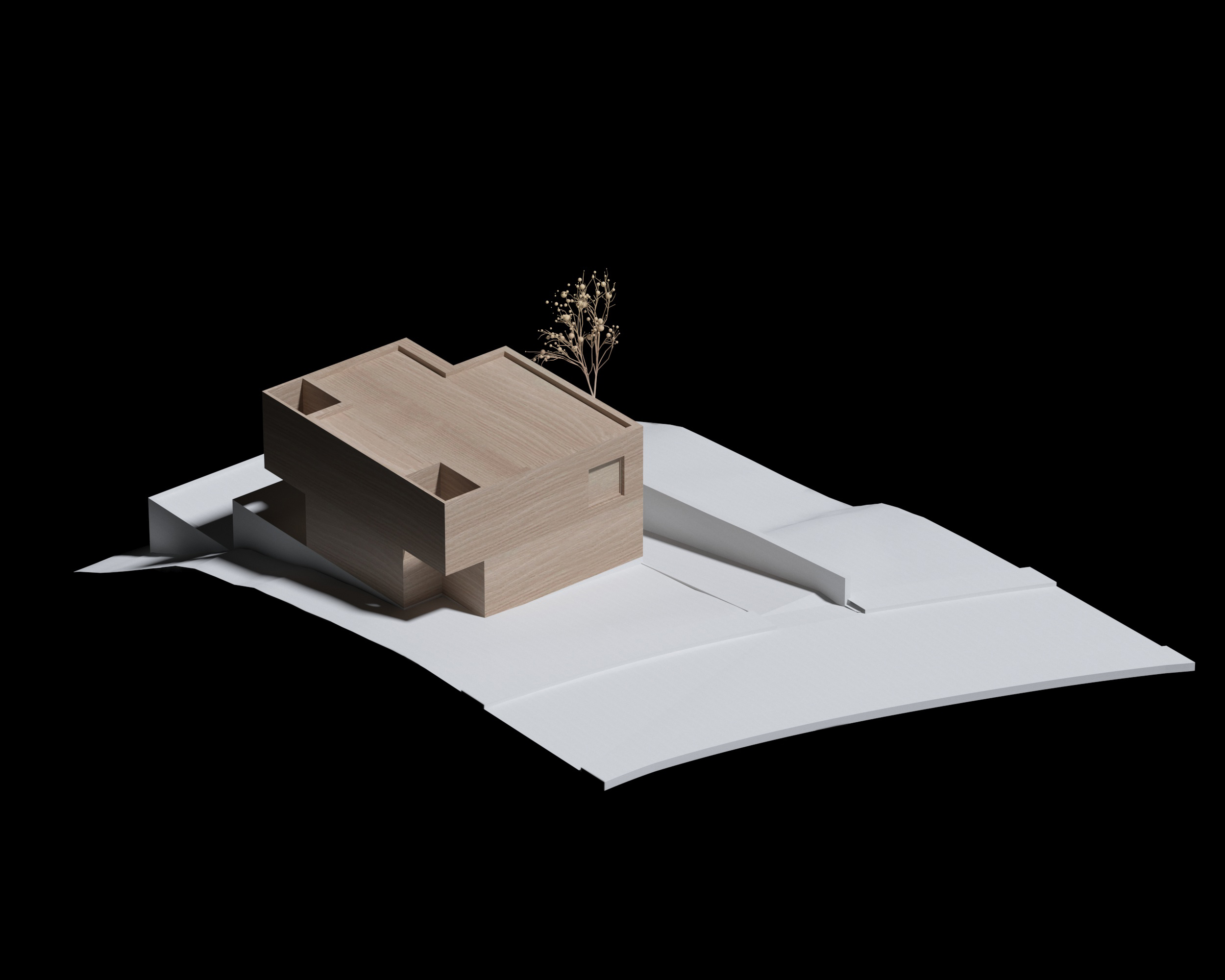With a privileged location and with views of the Sintra mountain range and Palácio da Pena, as well as the plain, the construction of the house takes advantage of its near and distant surroundings. With a T3 Tipology, it develops at two floors above the entrance level and 1 floor below. The social areas are located at the ground floor and the private areas at level 1. It is located on a plot with 549.95 square meters, has an implantation area of 140.00 square meters, a construction area of 250.00 square meters and a basement parking area with 90.00 square meters. On this same level are located the outdoor areas that are complemented by an infinity pool that overlooks thru the landscape.
The house presents an articulation between volumes and voids that create different depths, bringing out a dichotomy between transparency and opacity, light and shadow. These volumes were arranged in such a way to integrate themselves into the natural morphology of the land, taking advantage not only of the views, but also of the external surroundings.
The exterior materiality of the facades presents the combination of two natural finishings – stone and wood – giving the house an evident singularity and integrating itself into the landscape. On the one hand, on the ground floor and upper floor facades, the use of carbonized wood, through the application of the traditional Japanese technique Shou Sugi Ban, will allow the creation of an aesthetic that combines ancestrality with contemporaneity. On the other hand, on the basement floor facades, which is partially “under ground”, the use of stone, walled with dry joint, will contrast with the dark wood, evoking, a natural sense of the house integration on the ground.
In a symbiosis between the built environment and the natural environment, the importance of integrating nature based solutions, through a green wall and green roof system, will allow the continuity of biological functions, minimizing the impact of construction on the territory and its adaptation to effects of climate change (such as “heat islands” or heavy rainfall).






















